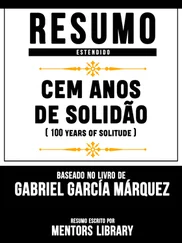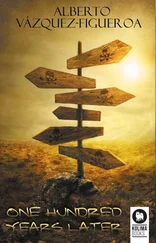48
Monod (René),
see
Gorenstein (Robert)
Mortsauf, Mortaufs, Motfraus, Morstauf, Morfaust, Mortfaus,
see
M
.
Mozart (Wolfgang Amadeus):
52
,
114
,
116
,
122
Müller (Lieutenant):
78–79
N Nadault (Émile): 66
Nadault (Hélène):
66
O Ollier (François): 70–71, 131
Our Lady of Lourdes:
29
P Painlevé (Paul): 47
Pariset (Henri):
51-52
,
54-57
,
76
,
106-109
,
113-114
,
126
,
132
,
134
Pariset (Louis):
114
Pershing (John):
31
Pétain (Philippe):
105
,
112
Petrarch (Francesco):
101
Pierre,
see
Meyer (Pierre)
Q Queneau (Raymond): 94
Quesnay (Pierre):
75-76
Quesnay (René):
75-76
R Raffke (Hermann): 61, 141
Ranvier (Gabriel):
75-77
Reisky (Samuel):
132-133
Riemann (Bernhard):
82
Robert,
see
Gorenstein (Robert)
Rodin (Auguste):
153
Rol-Tanguy (Henri):
97
Roth (Daniel):
57-59
,
93
,
105
,
111
,
113-114
,
116
S Sacco (Nicola): 41, 120
Saint Christopher:
26
Saint John of the Cross:
23
Saint Marguerite:
152
Saint Theresa of Avila:
23
Saint-Bonnet (Jacques de):
19
,
22
Saint-Bonnet (Paul de):
21-22
,
25-26
,
29-30
Schiller (Friedrich von):
82
,
101
Schlag (Frau):
137
Schmitt (Marcel):
58
,
93
,
105
,
111
,
114
Schreiber (Emil):
85
,
91
,
149
Schumann (Robert):
154
Shelley (Percy Bysshe):
24
Silberberg (André):
46
,
49
,
51-59
,
65
,
76-78
,
91
,
102-122
,
125-126
,
130
,
132-133
,
144
,
149
,
152
,
154-155
Silberberg (Clara):
51-53
,
102
,
104-105
,
107-108
,
113-115
Silberberg (father):
51-53
,
102
,
104-105
,
107
,
111
,
113
Silberberg (mother):
51-53
,
102
,
104-105
,
107
,
111
,
113
Slawek (Stefan):
91
Smith (Barbara):
134
Smith (Harold):
91
,
134
,
136-137
,
140
Sonntag (Doctor):
53-54
,
58
,
109-113
,
121
,
130
Spankerfel (Karl Ludwig):
82
,
85-86
,
139
Stefi:
83
,
85
Stendhal:
146
,
153
T Tiedemann (Frau): 86, 91–92, 135, 137, 149
Tiedemann (Gustav):
68
,
84-85
,
91-92
,
128
,
135-136
,
149
U Ulrich (Frederica): 64-65
Ulrich (Friedrich):
64-65
Ulysses:
24
,
121
Unknown Soldier:
38
,
150
V Vanzetti (Bartolomeo): 41
Vendall (Sir Michael):
64
Volterra (Vito):
40
,
123
W Wagner (Richard): 74
Wallerant (Fernand):
64-65
Winckler (Marguerite):
117
X Xanten (Edmund): 63-65
Y Yersin (Claude): 62–63, 120, 144
Yersin (father):
63
,
66
,
91
,
144
Z Zach (Otto): 61, 63, 65, 78, 93
This text — what is it, exactly? A literary experiment? A pile of documents? A history lesson? A research project? A reading list? A language game? A series of exercises de style ? Or no more than an assortment of words and numbers?
Nothing like translation can lead you to so deeply question the nature of a literary text, especially when you’re translating an Oulipian text. Although I didn’t have to worry about avoiding certain letters or adhering to a fixed number of characters in each chapter, 1the main difficulty of translating One Hundred Twenty-One Days was that, at times, it felt like eleven disparate translation projects. And one huge research project. My job, like that of the historian, was to look for connections between these disparate elements and make some sense out of them — my own.
Examples of Oulipian constraints, respectively from Georges Perec’s La Disparition ( A Void , trans. Gilbert Adair) and Paul Fournel’s La Liseuse ( Dear Reader , trans. David Bellos).
In particular, the novel’s structure, which combines eleven different stylistic forms and links their beginnings and endings with the same few words, proved far more challenging (but no less fascinating) than I first imagined. With each chapter came a new style and voice that had to both stand alone and fit into the text’s whole. Like little Christian, I was asking all kinds of questions. What kind of diction would a World War I nurse use in her diary? How much should a transcribed interview sound like the way someone (and a very old someone at that) would speak? Just how many fragmentary sentences are permissible in a historian’s notes for them to still be readable (despite all the warnings from my spell checker)? Can a series of locational cues take you on a walk through Paris even if you’ve never been there?
To find answers to some of these questions, I read into the text, as well as beyond it. After all, translators (like writers) are readers, too. So as I worked on this translation, I read lots of material: wartime newspapers, mathematics articles, psychological evaluations, historical diaries, transcribed interviews, and many of the books mentioned in the supernumerary chapter.
Beyond these questions of style, One Hundred Twenty-One Days is packed with references to literary works and real people, places, and events. In order to understand how all these references fit into the text, I researched them, in depth. First, I set out to read as many of the books listed in the supernumerary chapter as possible (then, judging this perhaps a bit too ambitious, narrowed my list down to those works that play more significant roles in the text, if not their most relevant parts). I also made a playlist of the songs referenced in said chapter, and listened to it often (usually while translating). 2I even compiled over a hundred images on Pinterest depicting many of the people, places, things, and events (or their partial inspirations 3) that appear in the novel, from a kapok tree in Senegal to various photographs of mathematicians 4to all those historical plaques in Paris. Then, to get a better idea of where those plaques can be found, I took a virtual walk across Paris via Google Earth. And like any good researcher, I created a multi-tabbed Excel file to keep track of all kinds of information related to the text, including a timeline of the book’s events, a list of the Library of Congress call numbers for the books in the supernumerary chapter, and a chart copied from Wikipedia with details on all the English translations of Dante’s Inferno published before 1939. 5You haven’t seen any of this, but trust me, it’s there in the translation. For me, at least.
What if books came with their very own soundtracks? You might like to know that some of the fictional characters and places in the novel are inspired by real people or places, often with several real figures converging into one fictional one. There’s even a photograph of two mathematicians sitting outside and petting a dog that smacks of the one mentioned in chapter VI. Wikipedia: “English translations of Dante’s Divine Comedy.”
Читать дальше












